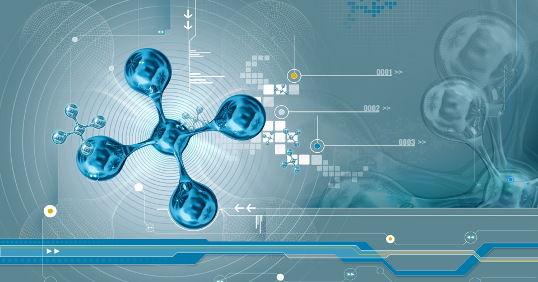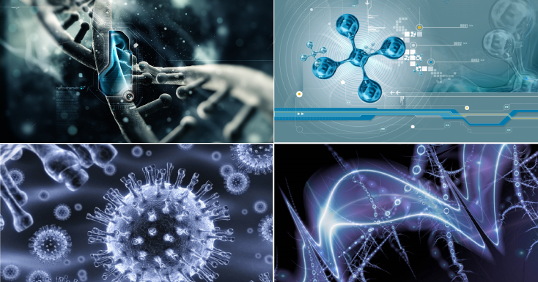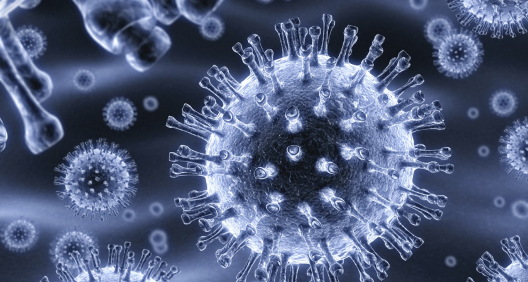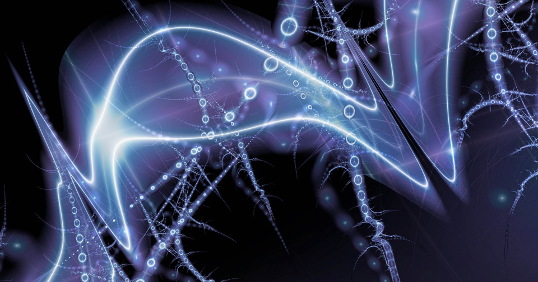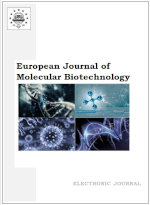1 December 24, 2024
Articles
1. Entesar Hussain Madi, Firas Rashad Al-Samarai, Yusuf Mohammad Attia Maaeni
Comparison between Elisa and Nested PCR for Detection of Toxoplasma Gondii in Blood and Milk and Its Genotyping in Goats and Aborted Women in Iraq
European Journal of Molecular Biotechnology. 2024. 12(1): 3-12.
Number of views: 101 Download in PDF
2. Evgenii D. Adamovich, Oleg V. GradovEuropean Journal of Molecular Biotechnology. 2024. 12(1): 3-12.
Abstract:
The purpose of the study was to compare the immunological and nested PCR (nPCR) for detection of Toxoplasma gondii in blood and milk in a flock of goats (local and Shami) in the middle of Iraq, as well as to identify the genotyping of Toxoplasma gondii in goats and aborted women. 80 female goats' samples (blood and milk) were collected. Samples of blood and milk were tested using Elisa and nPCR. The results revealed that 23 (28.7 %) goats tested positive for Elisa, and 17 (21.2 %) also tested positive for nPCR. The Kappa values (0.14) showed slight agreement with nPCR and Elisa in blood, with sensitivity (58.82) and specificity (74.60). The comparison between nPCR in blood and nPCR in milk revealed positive results of 17 (21.2 %) and 23 (28.7 %) in the samples respectively. The results showed a fair agreement according to kappa (0.471), had a sensitivity of 70.59 and a specificity of 82.54, and had a 95 % confidence interval (0.252 to 0.689). Elisa had a positive 17 (21.2 %) milk result. A positive sample in the blood nPCR was 17 (21.2 %), with sensitivity (82.35) and specificity (22.22) and a 95 % (-0.254 to 0.162), the kappa values (-0.046) showed no agreement with Elisa in milk and nPCR in the blood. By the (SAG3) gene, DNA sequencing of T. gondii based on goat and human isolates was submitted to NCBI Genbank and assigned the accession numbers (OL792791, OL792792, OL792793, OL792794, OL792795) for goat isolates and (OL792796, OL792797, OL792798, OL792799, OL792800) for human isolates. The homology sequence identity between Toxoplasma gondii goats and human isolates with NCBI BLAST-related Toxoplasma gondii genotype I and III isolates showed genetic homology sequence identity ranging from (98.65-99,90 %). In conclusion, the similarity of Toxoplasma gondii in molecular detection of milk and blood and homology identity isolates humans and goats as a zoonotic disease.
The purpose of the study was to compare the immunological and nested PCR (nPCR) for detection of Toxoplasma gondii in blood and milk in a flock of goats (local and Shami) in the middle of Iraq, as well as to identify the genotyping of Toxoplasma gondii in goats and aborted women. 80 female goats' samples (blood and milk) were collected. Samples of blood and milk were tested using Elisa and nPCR. The results revealed that 23 (28.7 %) goats tested positive for Elisa, and 17 (21.2 %) also tested positive for nPCR. The Kappa values (0.14) showed slight agreement with nPCR and Elisa in blood, with sensitivity (58.82) and specificity (74.60). The comparison between nPCR in blood and nPCR in milk revealed positive results of 17 (21.2 %) and 23 (28.7 %) in the samples respectively. The results showed a fair agreement according to kappa (0.471), had a sensitivity of 70.59 and a specificity of 82.54, and had a 95 % confidence interval (0.252 to 0.689). Elisa had a positive 17 (21.2 %) milk result. A positive sample in the blood nPCR was 17 (21.2 %), with sensitivity (82.35) and specificity (22.22) and a 95 % (-0.254 to 0.162), the kappa values (-0.046) showed no agreement with Elisa in milk and nPCR in the blood. By the (SAG3) gene, DNA sequencing of T. gondii based on goat and human isolates was submitted to NCBI Genbank and assigned the accession numbers (OL792791, OL792792, OL792793, OL792794, OL792795) for goat isolates and (OL792796, OL792797, OL792798, OL792799, OL792800) for human isolates. The homology sequence identity between Toxoplasma gondii goats and human isolates with NCBI BLAST-related Toxoplasma gondii genotype I and III isolates showed genetic homology sequence identity ranging from (98.65-99,90 %). In conclusion, the similarity of Toxoplasma gondii in molecular detection of milk and blood and homology identity isolates humans and goats as a zoonotic disease.
Number of views: 101 Download in PDF
Nanopore Technologies for Molecular Biotechnology: From Nanopore Sequencing to Nanopore-Based Resistive-Pulse Sensing Techniques (A Brief Review)
European Journal of Molecular Biotechnology. 2024. 12(1): 13-32.
Number of views: 120 Download in PDF
3. Evgenii D. Adamovich, Oleg V. Gradov, Fedor K. OrekhovEuropean Journal of Molecular Biotechnology. 2024. 12(1): 13-32.
Abstract:
It is known how promising the use of nanopores is for DNA sequencing, including the problems of functional genomics and epigenetics. For example, projects with nanopore sequencing of complete bacterial genomes and complete metagenomes, as well as resistomes (pools of antibiotic resistance genes) in microbial communities are already being implemented. This technique is based on changing electrical parameters and analyzing the signal as molecules pass through a nanopore. In addition to DNA, this method can study the characteristics of peptides and proteins, glycans and proteoglycans, and many supramolecular structures based on proteins and DNA (for example, viruses, in particular, bacteriophages), as well as microparticles and liposomes. It seems possible to analyze not only the recent biomolecular polymer structures, but also biomimetic and xenobiochemical sequences and ultramicroparticles. The unified principles of nanopore analysis for various biological macromolecules indicate the possibility of explicating nanopore measurement technologies for various tasks. However, to do this, it is necessary to calibrate and control the sizes of nanopore detectors themselves. Accordingly, one of such methods is multiparametric pore morphometry, carried out automatically (using machine image recognition methods) or manually. Scanning and transmission electron microscopy systems can be a source of data for this method. In this case, not only the pore size can be used, but also dimensionless characteristics (parameters of ellipticity, elongation, compactness, roundness, Feret diameter ratio for different levels of cutting or etching of nanopores, etc.). This work is an expanded version of the report on this topic prepared in 2021 (for a conference on new polymer and composite materials). This extended version is integrated with the texts of reports (on the measurements of biological and viral particles in pores of different sizes and geometries) from the virtual meeting held online during the coronavirus pandemic (Webinar on Electrochemical Technologies in NGS (March 14, 2022 – March 15, 2022)). Despite the significant obsolescence of some parts of this review, the physical principles of detection have not changed, as well as the biological and biomedical significance of this approach. This allows us to consider this material as a good didactic reference source (as well as a retroforesight review, a number of assumptions and bibliographic conclusions from which have already come true or are beginning to come true at the present time – several years after writing and presenting of the original reports).
It is known how promising the use of nanopores is for DNA sequencing, including the problems of functional genomics and epigenetics. For example, projects with nanopore sequencing of complete bacterial genomes and complete metagenomes, as well as resistomes (pools of antibiotic resistance genes) in microbial communities are already being implemented. This technique is based on changing electrical parameters and analyzing the signal as molecules pass through a nanopore. In addition to DNA, this method can study the characteristics of peptides and proteins, glycans and proteoglycans, and many supramolecular structures based on proteins and DNA (for example, viruses, in particular, bacteriophages), as well as microparticles and liposomes. It seems possible to analyze not only the recent biomolecular polymer structures, but also biomimetic and xenobiochemical sequences and ultramicroparticles. The unified principles of nanopore analysis for various biological macromolecules indicate the possibility of explicating nanopore measurement technologies for various tasks. However, to do this, it is necessary to calibrate and control the sizes of nanopore detectors themselves. Accordingly, one of such methods is multiparametric pore morphometry, carried out automatically (using machine image recognition methods) or manually. Scanning and transmission electron microscopy systems can be a source of data for this method. In this case, not only the pore size can be used, but also dimensionless characteristics (parameters of ellipticity, elongation, compactness, roundness, Feret diameter ratio for different levels of cutting or etching of nanopores, etc.). This work is an expanded version of the report on this topic prepared in 2021 (for a conference on new polymer and composite materials). This extended version is integrated with the texts of reports (on the measurements of biological and viral particles in pores of different sizes and geometries) from the virtual meeting held online during the coronavirus pandemic (Webinar on Electrochemical Technologies in NGS (March 14, 2022 – March 15, 2022)). Despite the significant obsolescence of some parts of this review, the physical principles of detection have not changed, as well as the biological and biomedical significance of this approach. This allows us to consider this material as a good didactic reference source (as well as a retroforesight review, a number of assumptions and bibliographic conclusions from which have already come true or are beginning to come true at the present time – several years after writing and presenting of the original reports).
Number of views: 120 Download in PDF
Lecture Notes on History of Determination of Bio-Antioxidants and Neuromediators by GC- and GC-MS Techniques in Personalized Molecular Medicine
European Journal of Molecular Biotechnology. 2024. 12(1): 33-55.
Number of views: 117 Download in PDF
European Journal of Molecular Biotechnology. 2024. 12(1): 33-55.
Abstract:
A significant task related to the practice of using various antioxidants in medicine is their detection in natural samples, pharmaceutical substances and their precursors, in human tissues and physiological secretions. Without registering the redox status of the latter, the transition from redox biology to redox medicine cannot be made. Without objective registration of redox status, a constructive approach to redox pathology, redox etiology and redox prevention of diseases by introducing antioxidant-containing foods and active additives into the diet is impossible. Therefore, technologies for analytical and analytical biochemistry of antioxidants are extremely important in setting problems in redox medicine. At the same time, many methods that are used for these purposes determine the activity, but not specific, selective in composition and reactivity in a given environment, chemical systems, an example of which is the potentiometric determination of redox-active forms. If we accept that many antioxidant schemes work effectively in micro-heterogeneous/ultramicroheterogeneous environments, and biological tissue with organelles with different electrophysical parameters is one of the most typical examples of these environments, then it becomes obvious that additive analysis, as well as assessment of the overall redox efficiencies are not stringent enough for redox medicine. It is necessary, at a minimum, to separately evaluate the concentrations of different redox components and antioxidants, and, as a maximum, to carry out position-sensitive analysis – in the compartments in which the reaction process takes place. The second task relates to typical cytochemistry or ultrastructural biochemistry, therefore it is not considered in this review, and the first task is simple, from the point of view of measurements at individual points or with averaging over a sample – that is, standard methods of bioanalytical chemistry. In particular, methods of gas chromatography of antioxidants, which are most intensively developed in the aspect of GC-MS, can be considered the optimal means for achieving such analytical goals. However, classical gas chromatographic techniques can also be used for these purposes, as will be shown in this historical bibliographic review, based on a course of lectures on these methods that has been formed since the 2000s to 2020s (due to which the depth of the search, unlike the latest reviews, is not limited to the last few years, and the review has a significant historical bias).
A significant task related to the practice of using various antioxidants in medicine is their detection in natural samples, pharmaceutical substances and their precursors, in human tissues and physiological secretions. Without registering the redox status of the latter, the transition from redox biology to redox medicine cannot be made. Without objective registration of redox status, a constructive approach to redox pathology, redox etiology and redox prevention of diseases by introducing antioxidant-containing foods and active additives into the diet is impossible. Therefore, technologies for analytical and analytical biochemistry of antioxidants are extremely important in setting problems in redox medicine. At the same time, many methods that are used for these purposes determine the activity, but not specific, selective in composition and reactivity in a given environment, chemical systems, an example of which is the potentiometric determination of redox-active forms. If we accept that many antioxidant schemes work effectively in micro-heterogeneous/ultramicroheterogeneous environments, and biological tissue with organelles with different electrophysical parameters is one of the most typical examples of these environments, then it becomes obvious that additive analysis, as well as assessment of the overall redox efficiencies are not stringent enough for redox medicine. It is necessary, at a minimum, to separately evaluate the concentrations of different redox components and antioxidants, and, as a maximum, to carry out position-sensitive analysis – in the compartments in which the reaction process takes place. The second task relates to typical cytochemistry or ultrastructural biochemistry, therefore it is not considered in this review, and the first task is simple, from the point of view of measurements at individual points or with averaging over a sample – that is, standard methods of bioanalytical chemistry. In particular, methods of gas chromatography of antioxidants, which are most intensively developed in the aspect of GC-MS, can be considered the optimal means for achieving such analytical goals. However, classical gas chromatographic techniques can also be used for these purposes, as will be shown in this historical bibliographic review, based on a course of lectures on these methods that has been formed since the 2000s to 2020s (due to which the depth of the search, unlike the latest reviews, is not limited to the last few years, and the review has a significant historical bias).
Number of views: 117 Download in PDF
History of Science
4. Anvar M. Mamadaliev
A Brief Historical Sketch for the Biographical Portrait of Gustav Alexandrovich Bunge (1844–1920) to the 180th Anniversary of his Birth
European Journal of Molecular Biotechnology. 2024. 12(1): 56-61.
Number of views: 97 Download in PDF
5. Sergei N. NikitinEuropean Journal of Molecular Biotechnology. 2024. 12(1): 56-61.
Abstract:
The article is dedicated to the 180th anniversary of the birth of Gustav Alexandrovich Bunge (1789–1865), a Russian physiologist, nutritionist and chemist of German origin, who became famous for studying the effects of various trace elements from food on the human body. There are discrepancies in the medical and historical sciences about the nationality of the scientist; taking into account Russian citizenship and birth in the Russian Empire, we consider Bunge to be a Russian scientist. He published his works in German. The materials of this work are the works of Bunge himself, as well as some biographical works in periodicals and encyclopedic publications. Gustav Pierce Alexander von Bunge studied the effects of sodium and potassium chlorides, hydroxides and carbonates on the human body and other mammals, established the necessary standards for the use of various food salts and the harm of increased levels of such in the body, determined the chemical composition of milk and made a comparative analysis of its usefulness with other foods, studied the intake rates of minerals and other trace elements in The human body was also the first to substantiate the harm of alcohol. He became the scientific supervisor of the doctoral thesis of N.I. Lunin, the discoverer of vitamins. Bunge promoted and led a healthy lifestyle himself and promoted the idea of moderation and abstinence in his writings, proving that many social illnesses of people and the underlying problems of society in general, and man in particular, can be cured by abstinence. He was actively engaged in teaching.
The article is dedicated to the 180th anniversary of the birth of Gustav Alexandrovich Bunge (1789–1865), a Russian physiologist, nutritionist and chemist of German origin, who became famous for studying the effects of various trace elements from food on the human body. There are discrepancies in the medical and historical sciences about the nationality of the scientist; taking into account Russian citizenship and birth in the Russian Empire, we consider Bunge to be a Russian scientist. He published his works in German. The materials of this work are the works of Bunge himself, as well as some biographical works in periodicals and encyclopedic publications. Gustav Pierce Alexander von Bunge studied the effects of sodium and potassium chlorides, hydroxides and carbonates on the human body and other mammals, established the necessary standards for the use of various food salts and the harm of increased levels of such in the body, determined the chemical composition of milk and made a comparative analysis of its usefulness with other foods, studied the intake rates of minerals and other trace elements in The human body was also the first to substantiate the harm of alcohol. He became the scientific supervisor of the doctoral thesis of N.I. Lunin, the discoverer of vitamins. Bunge promoted and led a healthy lifestyle himself and promoted the idea of moderation and abstinence in his writings, proving that many social illnesses of people and the underlying problems of society in general, and man in particular, can be cured by abstinence. He was actively engaged in teaching.
Number of views: 97 Download in PDF
Boris Ivanovich Slovtsov (1874–1924): Biographical Portrait of a Russian Biochemist Dedicated to the 150th Anniversary of his Birth
European Journal of Molecular Biotechnology. 2024. 12(1): 62-68.
Number of views: 112 Download in PDF
6. European Journal of Molecular Biotechnology. 2024. 12(1): 62-68.
Abstract:
The article is dedicated to the 150th anniversary of the birth of the Russian biochemist, pharmacologist, physiologist and nutritionist, Professor Boris Ivanovich Slovtsov (1874–1924). The materials of this work are the works of Slovtsov himself, as well as some biographical, historical and medical research. The research methods used are the historiographical method, the biographical method, the synthesis method and the classification method. In his 150 scientific papers, B.I. Slovtsov investigated the peculiarities of salivary oxidase, the transformation and distribution of dietary protein in the group of anhydride proteins of the liver, blood and muscles, including in conditions of hunger, the effects of sugar and saccharins in the human body, as well as diseases associated with elevated blood sugar levels, problems of labor physiology and related issues of labor regime, overwork, rationing of loads, etc., analyzed the effect of Matsesta hydrogen sulfide waters as a recreational resource. Slovtsov also studied the history of pharmacology and its development at his present stage, empirically studying the effects of certain chemical medicines and herbs. In the life of the Russian medical community, he drew the attention of colleagues to the problems associated with the malnutrition of the Russian population. Slovtsov's works were practically oriented, the target audience of his research were practicing doctors, medical students, and natural scientists. He also published textbooks on physiology, physiological and biological chemistry, and occupational physiology; most of these manuals were published several times over the decades and invariably served as textbooks for several generations of students. The scientific language of Professor B.I. Slovtsov was distinguished by conciseness, accuracy, ease of perception, as well as a small bit of professional humor.
The article is dedicated to the 150th anniversary of the birth of the Russian biochemist, pharmacologist, physiologist and nutritionist, Professor Boris Ivanovich Slovtsov (1874–1924). The materials of this work are the works of Slovtsov himself, as well as some biographical, historical and medical research. The research methods used are the historiographical method, the biographical method, the synthesis method and the classification method. In his 150 scientific papers, B.I. Slovtsov investigated the peculiarities of salivary oxidase, the transformation and distribution of dietary protein in the group of anhydride proteins of the liver, blood and muscles, including in conditions of hunger, the effects of sugar and saccharins in the human body, as well as diseases associated with elevated blood sugar levels, problems of labor physiology and related issues of labor regime, overwork, rationing of loads, etc., analyzed the effect of Matsesta hydrogen sulfide waters as a recreational resource. Slovtsov also studied the history of pharmacology and its development at his present stage, empirically studying the effects of certain chemical medicines and herbs. In the life of the Russian medical community, he drew the attention of colleagues to the problems associated with the malnutrition of the Russian population. Slovtsov's works were practically oriented, the target audience of his research were practicing doctors, medical students, and natural scientists. He also published textbooks on physiology, physiological and biological chemistry, and occupational physiology; most of these manuals were published several times over the decades and invariably served as textbooks for several generations of students. The scientific language of Professor B.I. Slovtsov was distinguished by conciseness, accuracy, ease of perception, as well as a small bit of professional humor.
Number of views: 112 Download in PDF



